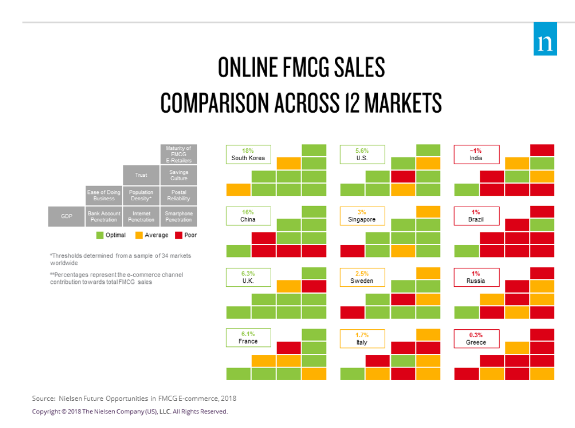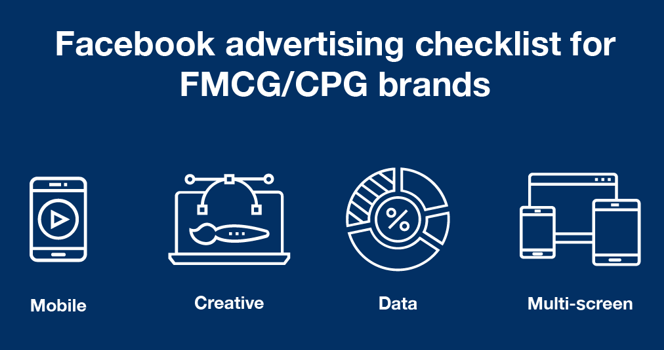
The new post Covid-19 reality has propelled digitalisation forward by five years. McKinsey research suggests that it could take anywhere between three to ten years for us to feel that going to supermarkets is again a safe and convenient way of grocery shopping.
Thus this decade bears profound implications for the fast moving consumer goods/consumer packaged goods (FMCG/CPG) sector. Companies will have to shift away from crisis mode, completing a fundamental realignment of their portfolio, and route-to-market strategies, in order to thrive. McKinsey forecasts that manufacturers and retailers will be compelled to switch to a hybrid model, combining digital commerce with products and services, delivered by neighbourhood stores. A whopping 70% of consumers plan to continue or increase their online shopping beyond the lifting of Covid-19 restrictions, 57% said they intend to continue ordering online and also picking up goods at local stores, and 28% said they would prefer to avoid shops altogether.

Why does this matter? Because the global FMCG market size is projected to reach $15,361.8 billion by 2025, registering a CAGR of 5.4% from 2018 to 2025, according to the Research and Markets Report. This makes FMCG the largest group of consumer products alongside the production, distribution, and marketing of these consumer goods.
FMCG/CPG battles retail to become the top digital advertising vertical.
Alongside the growth in the industry, FMCG/CPG also achieved notable growth in digital ad spend worldwide as companies understood the opportunities of digital. Research from eMarketer shows that Q2 of 2020 saw up to a 53% increase in ad spending in the FMCG/CPG sector. In the UK, 2020 FMCG/CPG represented a 13.5% share in digital ad spend, earning second place, following retail at 20% ad spend. In the USA, CPG will make up 14.4% of all US digital ad spending in 2020, making it the third-largest spender among the industries we cover. According to eMarketer research, CPG advertisers in the USA spend heavily within the mobile sector, with the most popular form being display advertising on social networks and video platforms.
In 2021 digital video advertising is expected to be the fastest-growing format in CPG ad spending, rising 17.1% to $5.54 billion in the USA alone. Digital video ad spending will make up 47.5% of CPG’s spending on display advertising in the USA and 28.6% of its overall digital spend.

On Facebook, smaller businesses can successfully take on some of the largest FMCG/CPG brands.
Facebook’s 2.8 billion audience represents an almost limitless world of opportunities for advertisers to explore, offering the chance to win customers over at their most receptive state.
FMCG/CPG is among the top five ad spend categories across most Facebook markets within the industry. Large brands such as Unilever, P&G, Nestle, have already fully leveraged the global opportunities that Facebook advertising can accomplish.
Ten million businesses actively utilise Facebook advertising, with the top 100 advertisers in the FMCG/CPG sector representing just 20% of total ad revenue, according to CNN.
Therefore, the size of your company on Facebook is not the top priority regarding advertising. The category is highly competitive, whilst offering a level playing field for global, national, and local brands. The business outcomes should be at the forefront, understanding the importance of expert teams, knowledge sharing, implementation of best practises, and the readiness to learn and develop.

A combining creativity and measurement on Facebook is a winning formula for FMCG/CPG brands.
Advertises within this segment have learnt to refine their marketing objective and define their optimal audiences in order to solve potential business problems. Additionally, advertisers should pay particular attention to the following:
Think mobile
Advertisers should embrace the consumer shift into the world of mobiles, placing their focus on short form storytelling. In 2020 73.4% of people browsed their mobile phones across Central Europe, and people in the USA reportedly spent almost all their spare time on internet apps. Brands are jumping onto this trend, initiating direct conversations with their consumers, and reaping the results
Think creative
Utilising the right creative could be your token to success. A clever thought through illustration might be just what you need to ensure your campaign stands out from the crowd. Therefore it is important to focus on creative actions which can set you apart from your competitors and leverage brand building creative insights.
Similarly, creative agencies should start incorporating the ‘Facebook Thumbstoppers’ feature into their work, helping brands bring inspiration to their customers, leading to increased purchases.
Think data
Leveraging Facebook’s advanced measurement tools, advertisers should aim to develop simple and adaptable measurement strategies, doing so will help advertisers to better understand their customers, and thus allow them to make the most effective business decisions. It is important as advertisers that you balance your long-term and short-term needs, Identifying move metrics and driving brand growth.
Create and run effective tests which allow you to quickly understand and adapt to necessary changes on an ongoing basis to optimise your campaign. Conduct experiments and studies to test new hypotheses and stick with what works.
Continuously track sales level data from sampled stores and insights for their digital ROI. With a strong focus on business outcomes with multiple levels of insights linking sales with their Facebook ad efforts, advertisers should be able to maximise the efficiency and effectiveness of their efforts on this global platform. Custom Mix modelling to support Sales ROI for digital spends can provide further assistance to fine tune campaigns and achieve maximum impact.
Finally, trust the machine learning algorithms behind your ads and make the most of automated placements, bidding, and targeting strategies to achieve cheaper conversion rates.
Think multi-screen
Finally, to reach TV viewers, FMCG/CPG brands should incorporate the multi-screen aspect into their Facebook ad campaigns. A vast majority of the public reportedly use multi-screen, as opposed to solely desktop or mobile. Specific insights should be acquired to understand how best to achieve optimal campaign results using a combination of both TV and Facebook ads.
Although there is no set recipe, various brands have achieved success in 2020. Below are a number of strategies used to make the most of Facebook advertising efforts.
As we move into the next phase of our post-Covid reality, the FMCG/CPG sector will undoubtedly continue to thrive, pivoting will remain an essential aspect within businesses, and digital commerce will be a non-negotiable ingredient for success. Facebook will continue to be the main client reach platform for the major label brands. For smaller brands, this period will enable them to compete with the larger platforms.

People love to talk about FMCG/CPG products on Twitter.
What better way to advertise your products than on a platform, where they are openly discussed in an engaging manner. Statistics show that 192 million people were active on Twitter in Q4 2021, and 27% year over year growth in Twitter’s active audience. Twitter has become a home to open discussions, product reviews, and recommendations, users are actively engaging with one another. Thus, Twitter is a great platform for FMCG/CPG brands to launch new products. Join in on user conversations, provide helpful tips, and announce special offers.
The Marketing Dive reported that Kraft Heinz, Nestlé, and Coca-Cola were among the top five Twitter ad spenders in 2019. The concentration of FMCG/CPG brands within Twitter’s top advertisers demonstrates the sheer value Twitter holds for brands in this industry.
Most FMCG/CPG brands use Twitter to run ads and organic campaigns, however Twitter has proven particularly successful for product launches. Having a highly engaged audience with users who care about a wide array of topics, makes Twitter the ultimate platform to reach out to your audience, however niche it might be. Average results from Twitter launch campaigns include a 82% higher recall, 18% increased brand awareness, 21% increased campaign awareness, and 15% increased message association.
Heinz is one of the largest players in the FMCG/CPG Business. Upon their decision to launch mayonnaise as a new product they discovered that a heated discussion was already in motion on Twitter surrounding Mayochup, a Heinz product previously launched in the Middle East. Following this, the Heinz brand team leveraged this debate, turning the discussion to Heinz Mayonnaise, by using Mayochup as a gateway. Instead of a simple tweet to drive conversations, the brand created a Twitter poll asking users whether the product should be released into US markets, the poll required 500,000+ yes votes to bring the product to market. As a result of this innovative approach Heinz successfully achieved a 28% increase in brand awareness.
Using innovative methods, remaining proactive and incorporating a little humour can thus enhance the success FMCG/CPG advertisers launches on Twitter. In the upcoming phases of the post-Covid reality, maintaining open discussions, product reviews, and recommendations, will continue to increase audience engagement and act as an essential factor in marketing approaches.
FMCG/CPG advertisers can Snap away to reach Gen Z members.
With over 265 million people using Snapchat daily worldwide, the app offers an exciting and effective platform for FMCG/CPG to open direct dialogs with millennials and Z generations. All eyes are moving towards the Z Generation, the cohort that according to eMarketer, has an estimated purchasing power of $143 billion a year.
Users on average are reportedly spending a minimum of 30 minutes daily on Snapchat. The platform offers a unique and powerful window for FMCG/CPG companies to reach younger generations. Some of the largest brands, including Mondelez, P&G, Reckkit and Unilever are already actively leveraging Snap ads for maximum impact.
Johnson&Johnson successfully implemented a Snap campaign to drive efficiencies at scale, delivering over 30 million impressions, at an average CPM of $1.342. Furthermore, Clean & Clear achieved strong interests through Snap Ads with over 104,000 Swipe Ups to the ®️website. Check out the success story here.
FMCG advertisers should not be afraid to leverage the opportunities that AR brings to the advertising world. They should instead learn to harness the power of Snapchat, and embrace the new era of consumers who will soon hold the largest purchasing power. For example, by making two friends shop for a prom dress together and add on a virtual try-on app for Gucci shoes. Look at your feet through a Snap camera to see how the latest design would fit you and then simply push a purchase button! In addition to developing such lenses on the platform, Snap is also letting brands like MLB and Nike build Snapchat AR lenses into their own apps.
To create a successful Snapchat campaign, FMCG/CPG advertisers should specifically focus on:
● Defining the target audience, whether this be by gender, age, or hobby etc.
● Deciding if your campaign is to be run on a specific date, such as an international holiday. Determining and applying these targeting and media inputs will help to identify the most optimal creative execution for your campaign.
● Determining which metrics to value: play time, shares, or conversions. Establishing this from the onset will be helpful for the creative direction and ensuring the concept matches the goal.
● Settling on which method will be used to measure success: impressions, playtime, click through, or app downloads etc. This will aid you in selecting the most effective formats (lens, snap ad, filter, etc), and provide you with a clear overview of your campaign.
No matter what your objective is, on Snapchat you’ll find solutions to help you reach your business goals (from awareness to driving consideration), ensuring you are able to transform your campaign into a success story.


